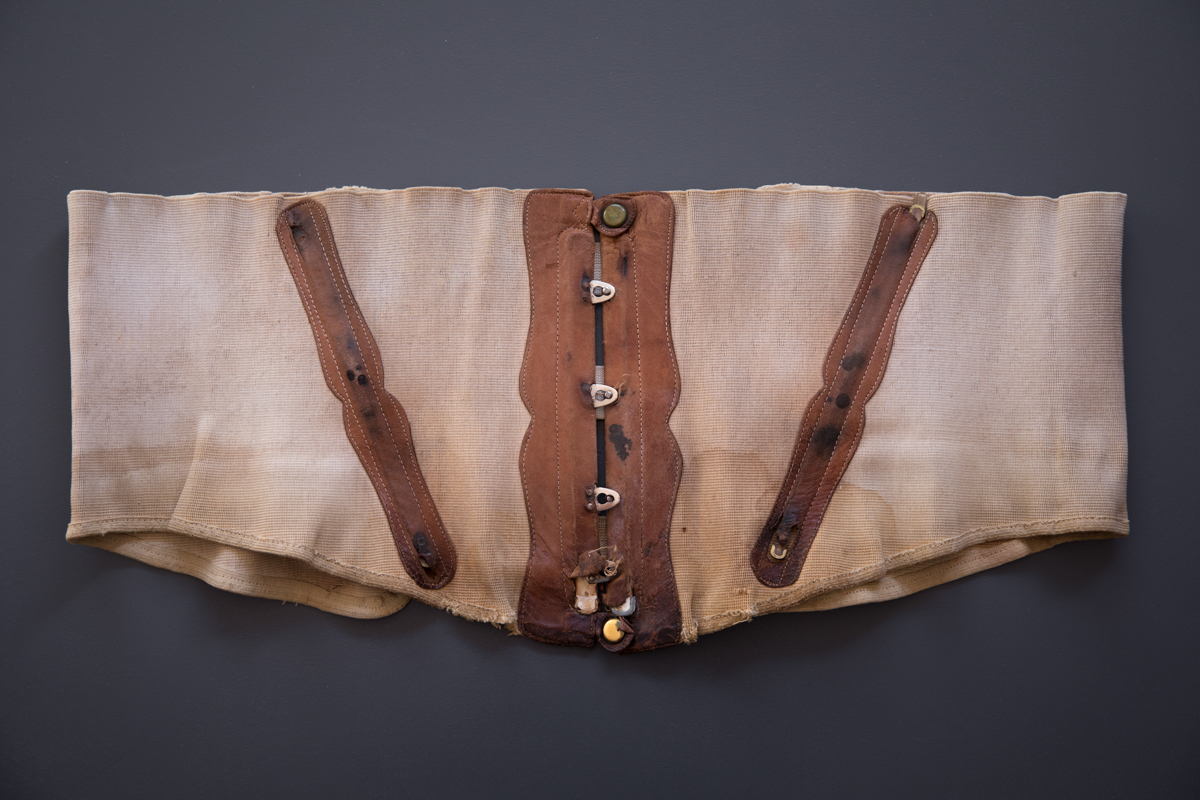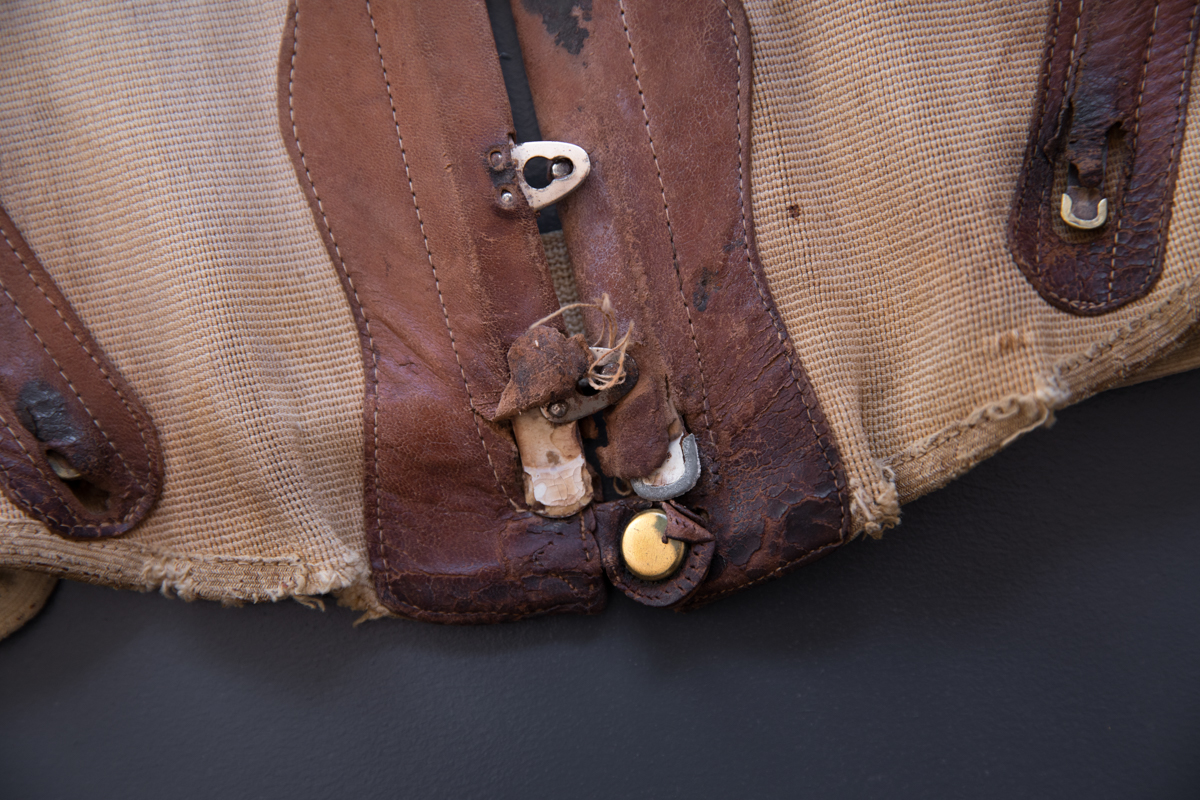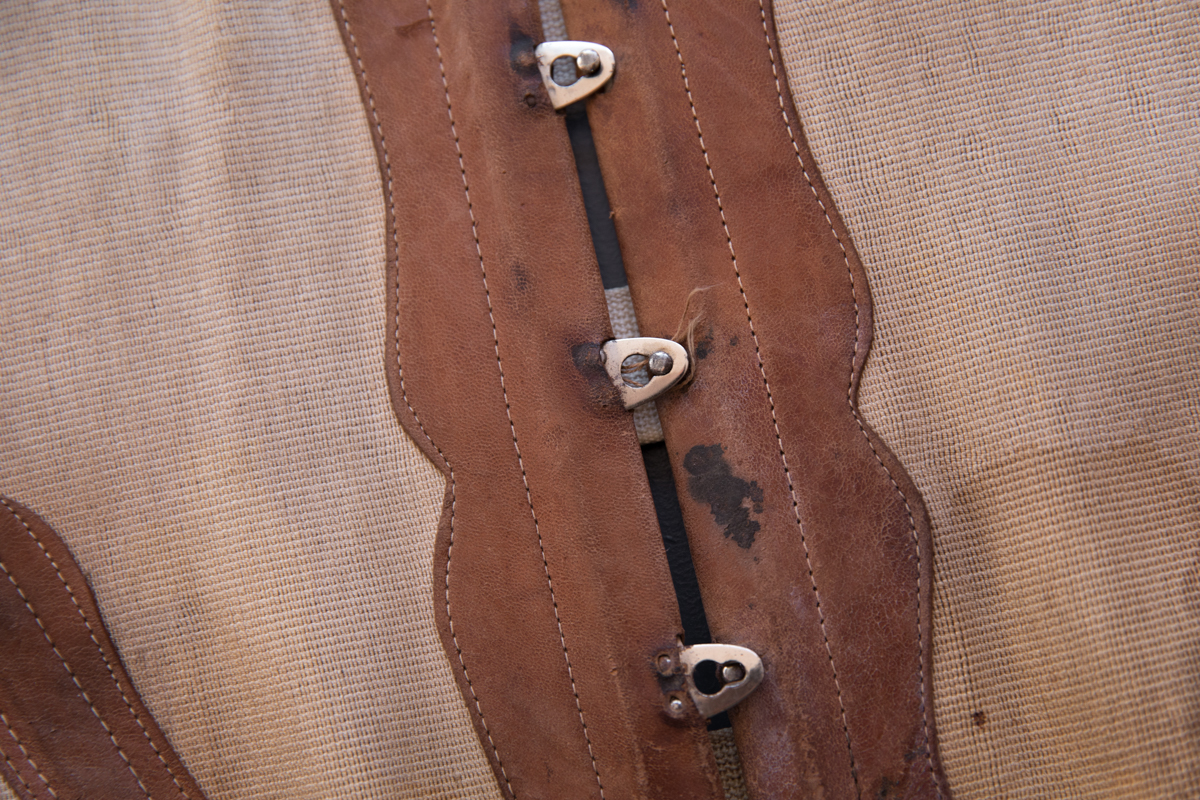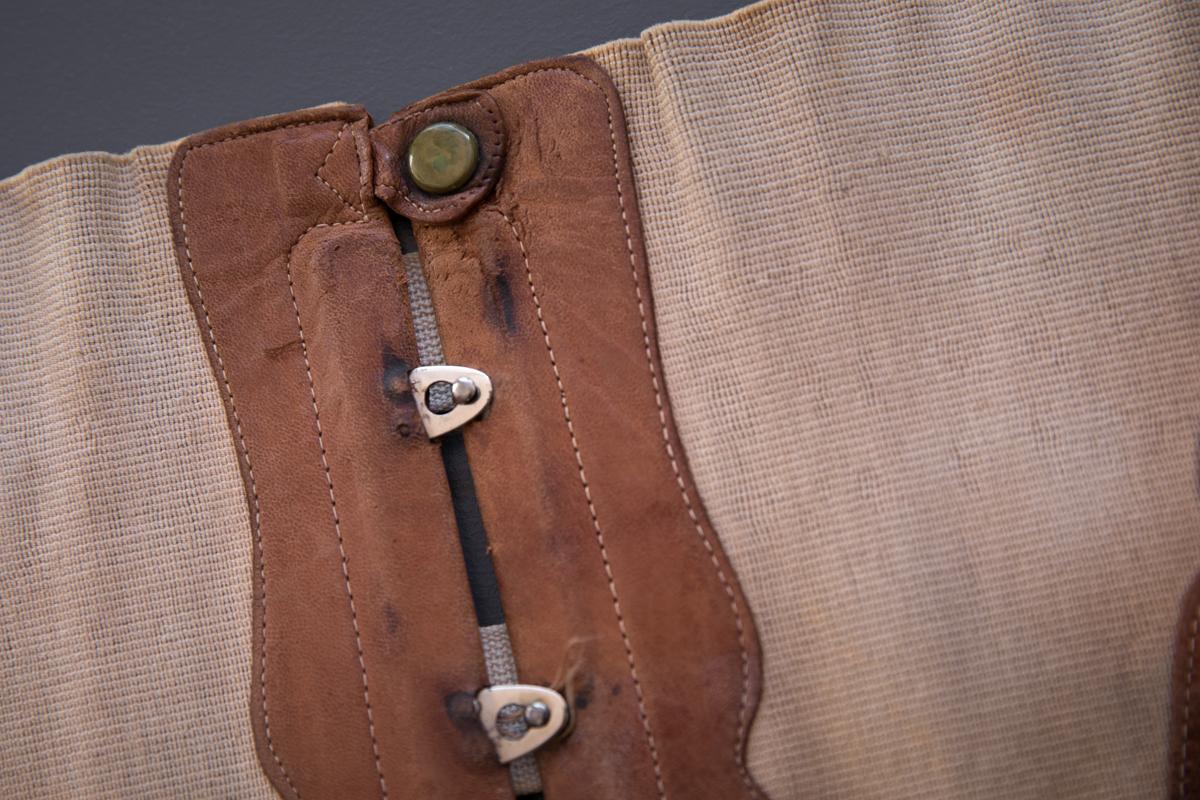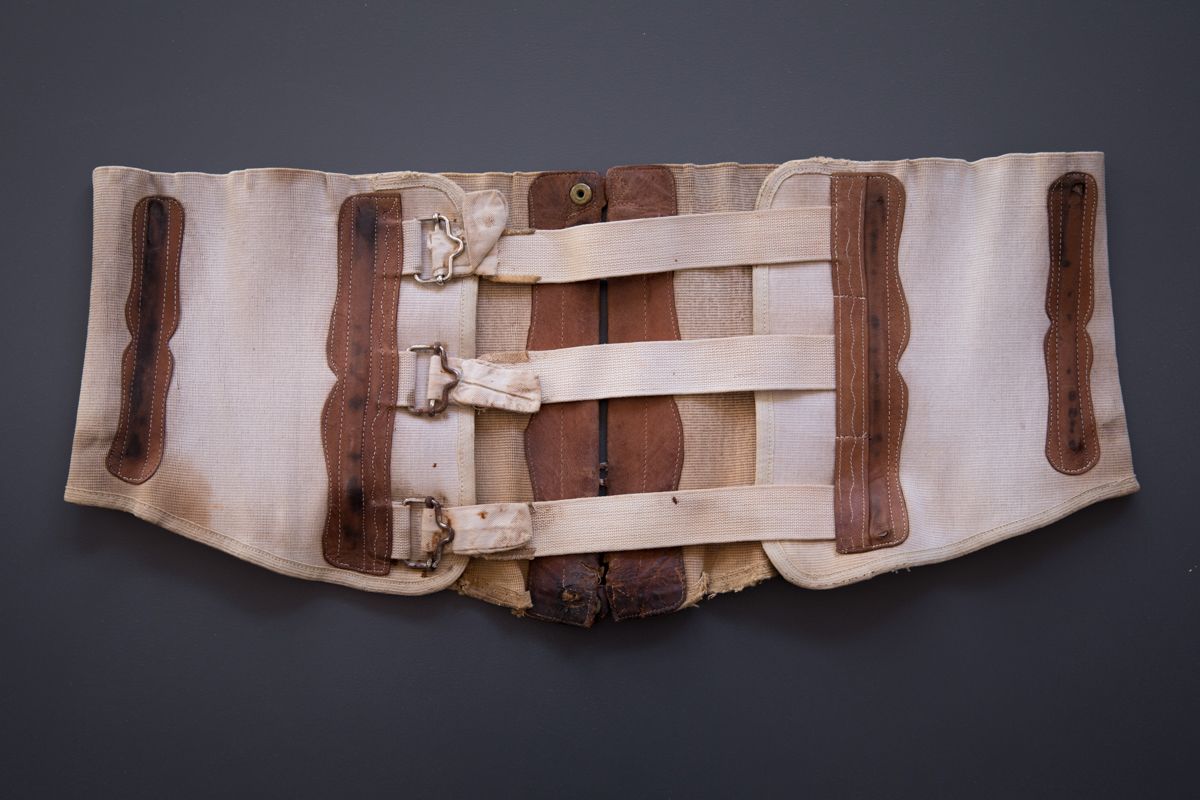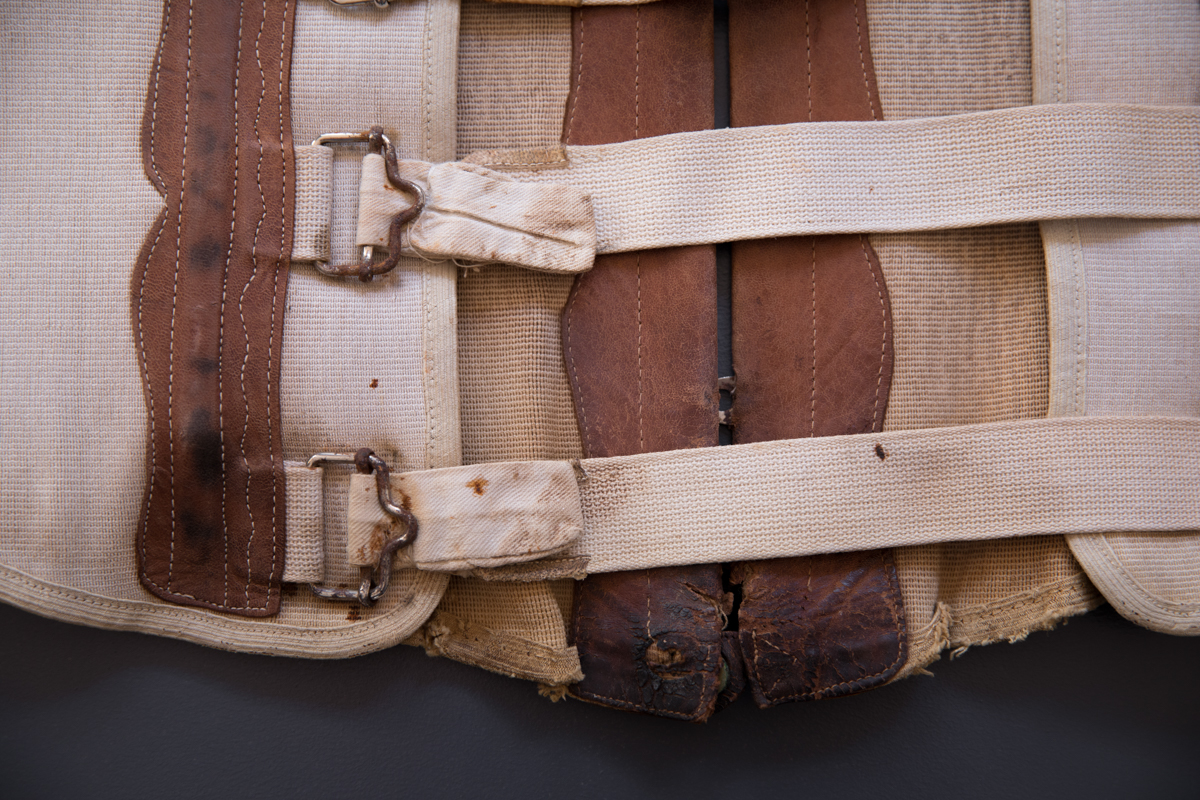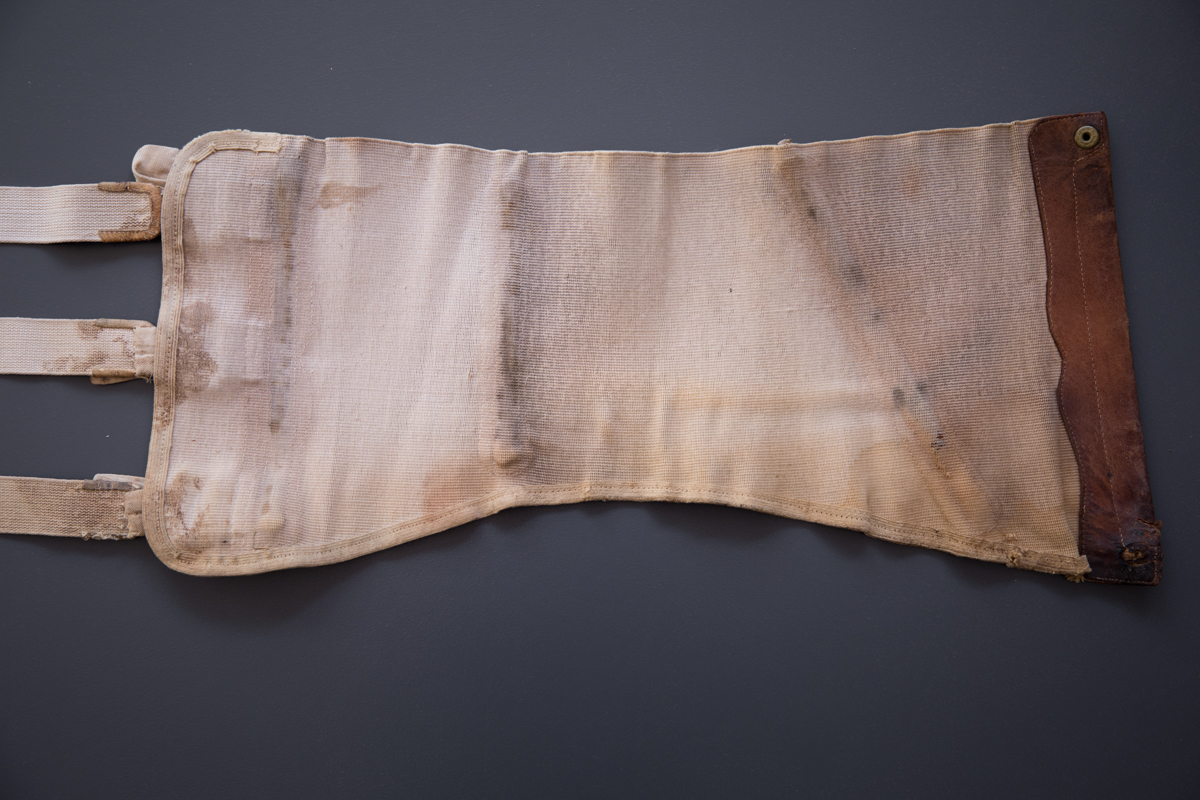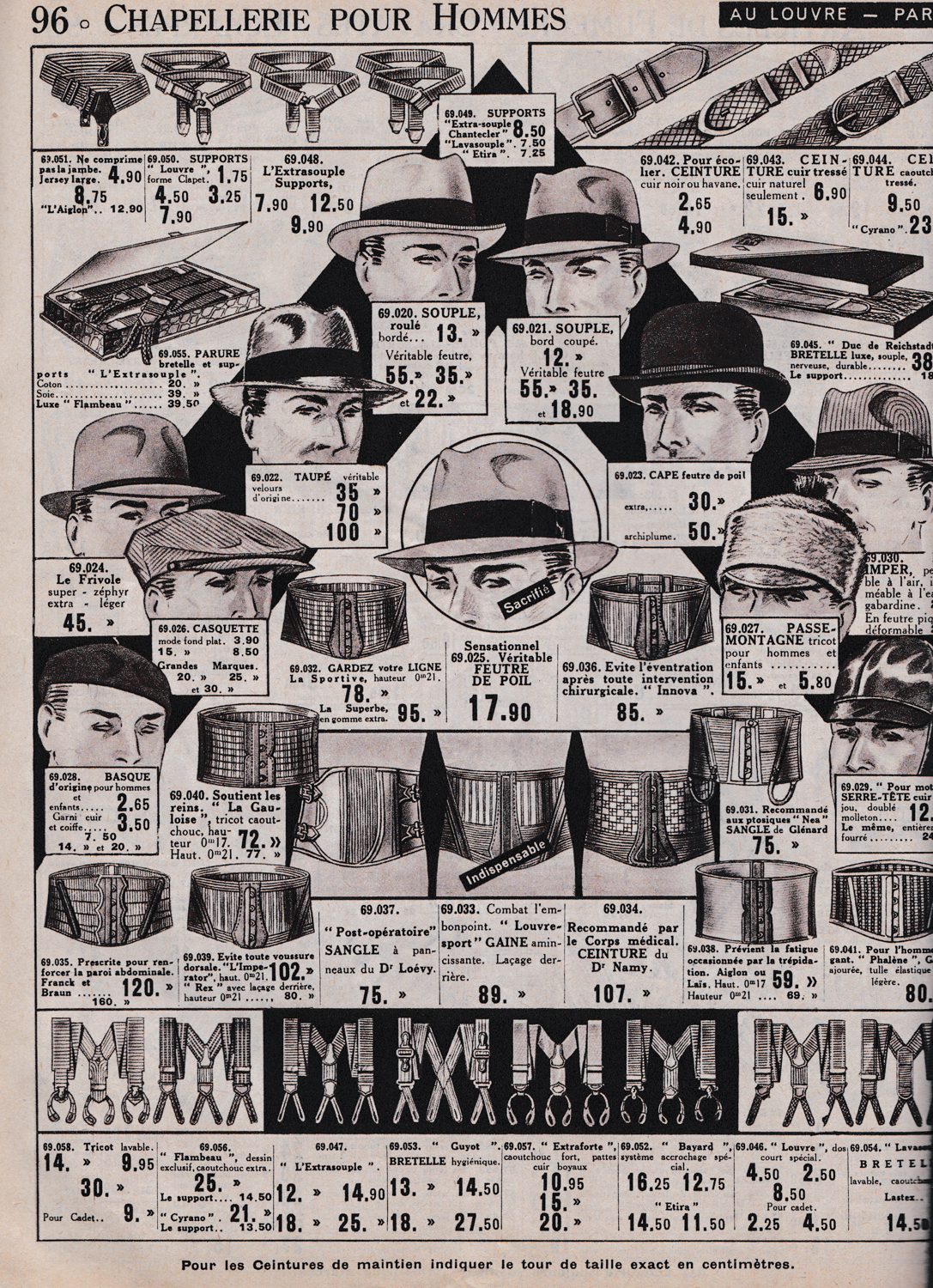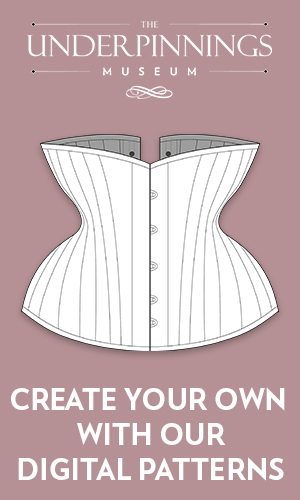Date: c. 1930s
Origin: Spain
Fabric: Elastic and leather
Brand: Unknown
A structured and supportive corset belt designed to be worn by men, made of a heavy weight elastic and leather. It’s supported throughout with spiral steel boning and a busk closure at the centre. The back adjusts with strips of elastic attached to cotton tabs. The garment would have been worn for back and abdominal support.
Contrary to contemporary popular opinion, forms of corsetry were worn by all genders and ages. Evidence exists to suggest that military men may have worn stays as far back as the 18th century, though it wasn’t until the rise of Dandyism in the early 19th century that corsets became more commonplace as a fashion item for men (albeit remained a somewhat fringe element of the Dandy style, with caricatures of the period choosing to mock the men that wore them, equating the garments with femininity and vanity).
Corsetry was worn by military men throughout the 19th century for its back supporting properties. Civilians would favour the garments for sporting purposes, particularly for horseriding. Garments would commonly be made of strongly woven fabrics or leather, supported by baleen or steel. These supportive garments would also be worn by fuller figured men, to help shape their figures for the fashionable silhouettes of the period; menswear throughout the 1830s was often cut to emphasise the waistline.
Male corsetry continued to be advertised well throughout the 1800s, though by the second half of the century the focus had turned to that of medical reasons and health, focusing on the supportive properties of the garment. Although the garments were functionally the same as women’s corsetry and often used the same materials, the language used to describe them would refer to the garments in military, surgical or sports terms, with ‘belt’ favoured over ‘corset’.
Similar garments continued to be sold by department stores well into the 19th century. A clipping from the Parisian ‘Louvre’ catalogue of 1935 shows near identical garments to this particular object.
From The Underpinnings Museum collection

